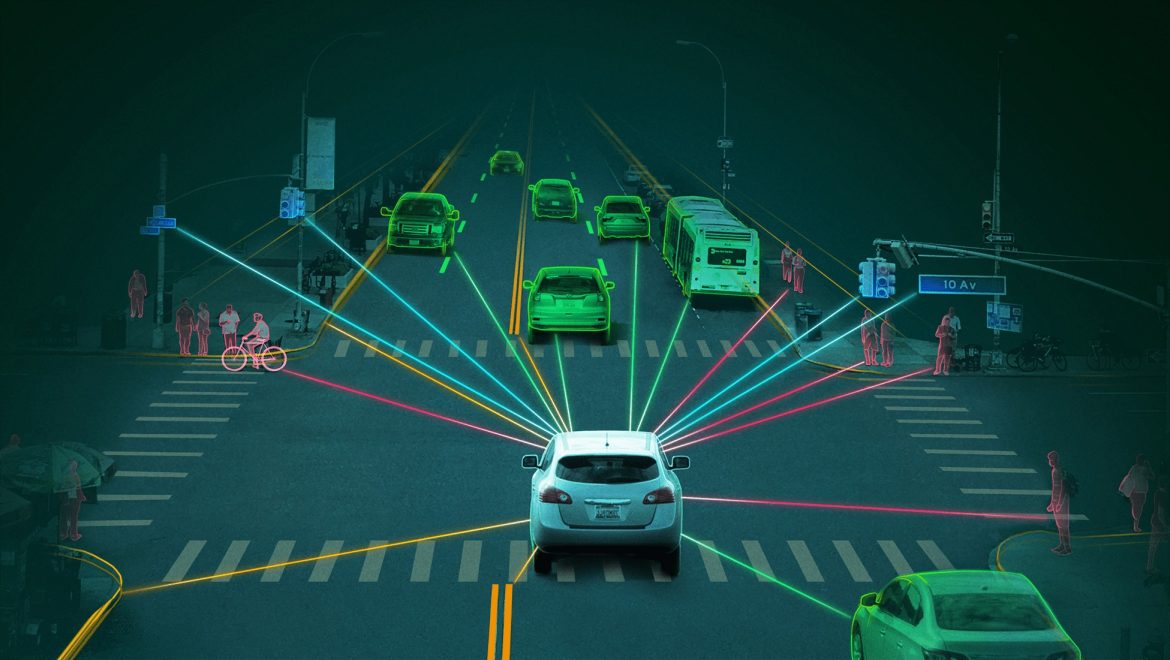Autonomous vehicles, once a futuristic concept, are now on the brink of revolutionizing transportation as we know it. With rapid advancements in artificial intelligence (AI) and sensor technology, self-driving cars promise safer, more efficient, and more convenient mobility solutions. In this article, we explore the latest developments in autonomous vehicles, the role of AI in driving innovation, and the implications for the future of transportation.
The Evolution of Autonomous Vehicles
Autonomous vehicles have undergone significant evolution in recent years, progressing from basic driver assistance systems to fully autonomous vehicles capable of navigating complex environments without human intervention. This evolution has been driven by breakthroughs in AI algorithms, machine learning techniques, and sensor technologies, enabling vehicles to perceive their surroundings, interpret data, and make real-time decisions autonomously.
Early autonomous vehicles relied primarily on rule-based systems and predefined maps to navigate controlled environments such as highways or structured urban areas. However, recent advancements in AI have enabled vehicles to adapt to dynamic and unpredictable driving conditions, such as congested city streets, construction zones, and adverse weather conditions, with greater reliability and accuracy.
AI in Autonomous Driving
AI plays a central role in enabling autonomous vehicles to perceive, analyze, and respond to their environment effectively. Machine learning algorithms, such as deep neural networks, enable vehicles to recognize objects, detect obstacles, and predict the behavior of other road users based on sensor data, including cameras, lidar, radar, and ultrasonic sensors.
By continuously learning from real-world driving experiences, AI-powered autonomous systems can improve their decision-making capabilities over time, enhancing safety and efficiency. Reinforcement learning techniques enable vehicles to learn optimal driving behaviors through trial and error, while advanced planning algorithms enable efficient route optimization and decision-making in complex traffic scenarios.
Challenges and Opportunities
Despite the remarkable progress in autonomous driving technology, several challenges remain to be addressed before widespread adoption can occur. Safety concerns, regulatory frameworks, ethical considerations, and public acceptance are among the key challenges facing the autonomous vehicle industry. Ensuring the safety of autonomous vehicles in all driving conditions, addressing liability issues in the event of accidents, and establishing clear guidelines for testing and deployment are essential for building trust and confidence in autonomous driving technology.
Moreover, the integration of autonomous vehicles into existing transportation infrastructure presents logistical and operational challenges. Coordinating with other road users, integrating with traffic management systems, and ensuring interoperability with legacy vehicles require collaborative efforts from stakeholders across industries, including automotive manufacturers, technology companies, policymakers, and urban planners.
The Future of Autonomous Transportation
Despite these challenges, the future of autonomous transportation holds immense promise for transforming mobility and reshaping urban landscapes. Autonomous vehicles have the potential to reduce traffic congestion, improve road safety, and enhance accessibility for individuals with disabilities or limited mobility. Moreover, autonomous ride-sharing and mobility-as-a-service (MaaS) platforms offer opportunities for more sustainable and efficient transportation solutions, reducing the need for private car ownership and optimizing resource utilization.
As AI continues to advance and autonomous driving technology matures, we can expect to see increasingly sophisticated and reliable autonomous vehicles on our roads. From passenger cars and delivery drones to autonomous buses and trucks, AI-driven transportation promises to revolutionize how we move people and goods, unlocking new possibilities for efficiency, convenience, and sustainability in the modern world.
Conclusion
In conclusion, autonomous vehicles powered by AI represent a transformative force in transportation, with the potential to reshape urban mobility and improve the quality of life for millions of people worldwide. With ongoing innovation, collaboration, and regulatory support, autonomous driving technology will continue to evolve, bringing us closer to a future where safer, smarter, and more sustainable transportation is within reach. As we navigate the complexities of this technological revolution, it is essential to prioritize safety, ethics, and inclusivity to ensure that autonomous vehicles deliver on their promise of a better future for all.

